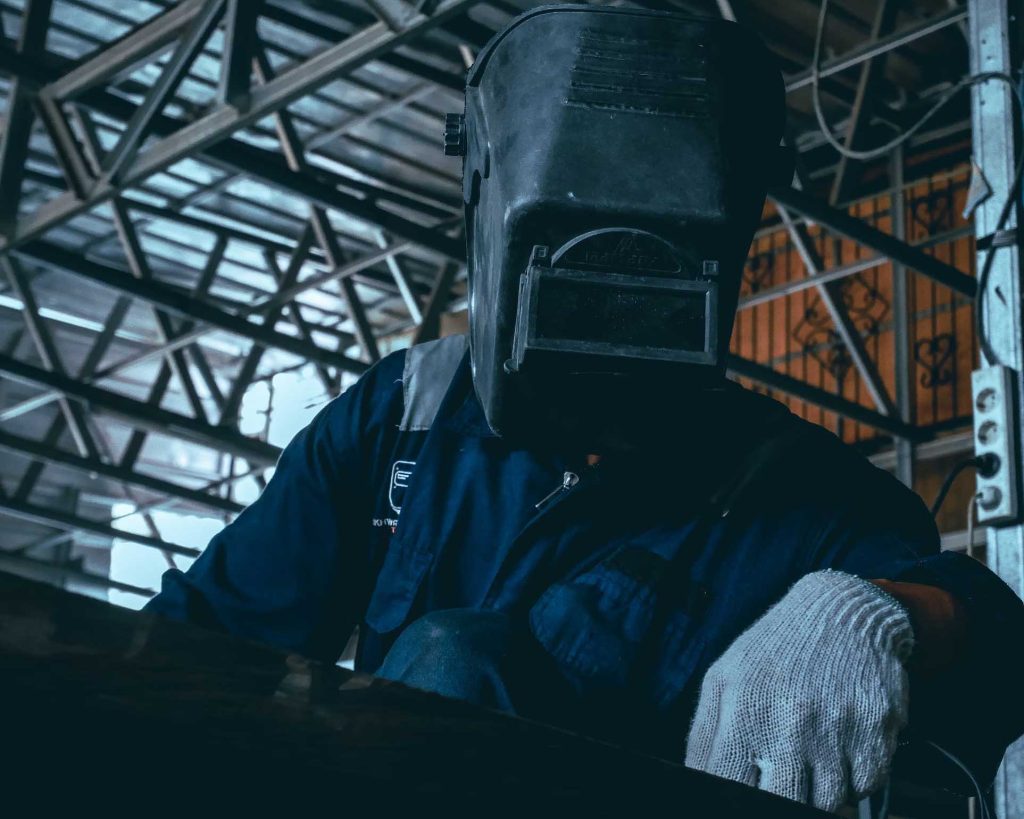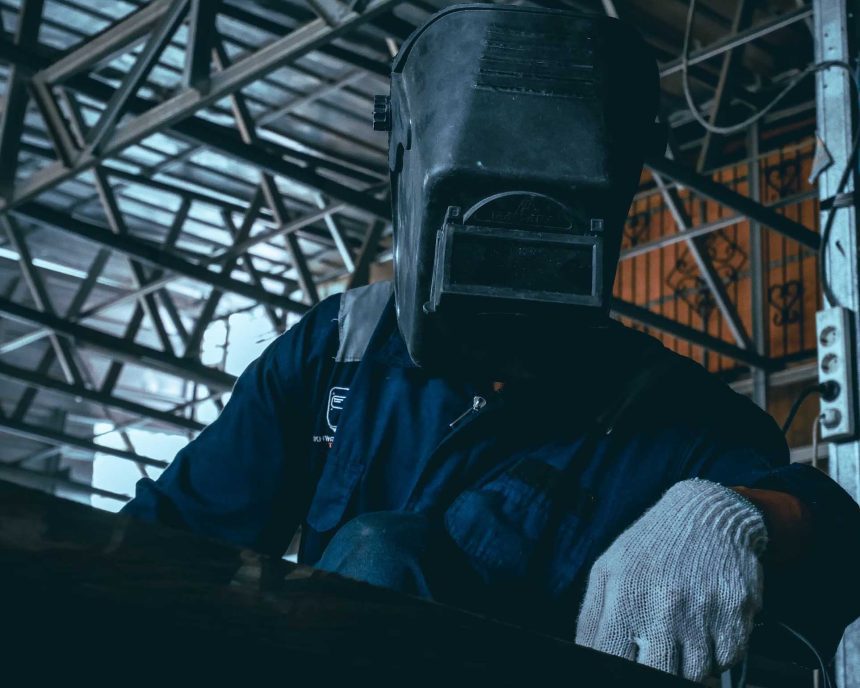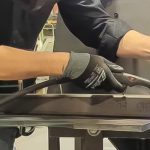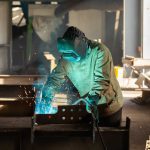Whether you’re a professional or a DIY enthusiast, using these proper techniques will deliver better results and enhance your overall experience with your plasma cutter. In this article, we will provide you with eight essential tips to optimize your plasma cutting process and achieve excellent results.
Need plasma cutting tips? From selecting the right machine to improving your technique, try these best practices for the best results.
Welding Town
Plasma Cutting Basics
Plasma cutting is a highly efficient process that offers excellent cutting, gouging, and piercing capabilities at high speeds. It is widely used across various industries and applications. The process involves constricting an open arc by passing it through a small nozzle from the electrode to the workpiece. While the technology may seem complex, the actual process is easy to learn and perform.
Plasma cutting can be applied to any type of electricity-conducting metal and can handle a variety of material sizes. It is suitable for cutting thin-gauge aluminum, stainless steel, carbon steel, and other metals, depending on the cutting machine’s power. Compared to oxy-fuel cutting, plasma cutting offers several advantages, including faster cutting speeds, no pre-heat cycle requirement, smaller cut width, and a smaller heat-affected zone, preventing the warping of the surrounding areas.

Tip 1: Choose the Right Plasma Cutter
Selecting the appropriate plasma cutter is crucial for achieving optimal cutting results. Consider the following key factors when choosing your machine:
- Output Power: The necessary output power depends on the thickness and type of material you plan to cut. Ensure that your plasma cutter can handle both rated and sever cuts. Rated cut refers to the thickness of mild metal that can be manually cut at a rate of 15 inches per minute (IPM), while sever cut indicates the maximum thickness the plasma cutter can handle. Remember that higher power enables faster cutting speeds.
- Cutting Speed: The cutting speed is typically measured in inches per minute (IPM). A machine that cuts 1/2-inch material in one minute is more efficient than a machine that takes five minutes for the same task. Cutting speed significantly affects production time, so choose a machine that offers optimal cutting speeds for your requirements.
- Input Power: Determine whether you will always use the plasma cutter in the same location or require portability and flexibility to use different power sources. Look for plasma cutters that offer a range of power options, allowing you to switch between 120-volt and 240-volt power as needed.
- Duty Cycle: The duty cycle refers to the amount of time a plasma cutter can cut within a 10-minute cycle without overheating. For example, if a machine has a duty cycle of 60%, it can operate continuously for six out of every 10 minutes and then requires cooling for the remaining four minutes. A larger duty cycle is essential for making long cuts, high productivity applications, or using the machine in hot environments.
- Weight and Size: If portability is a requirement, consider lightweight and compact hand-portable units. Many options weigh less than 45 pounds, offering excellent mobility.
Tip 2: Read the Plasma Cutter Manual
Before operating your plasma cutter, thoroughly read the owner’s manual to familiarize yourself with its safe and correct usage. The manual contains valuable information to optimize your plasma cutter’s capabilities and ensure safe operation. Take the time to understand the machine’s features, recommended settings, maintenance procedures, and troubleshooting guidelines.
Tip 3: Pay Attention to Setup
Proper setup is essential for achieving optimal plasma cutting results. Follow these steps for an effective setup:
- Secure the Ground Clamp: Attach the ground clamp to clean metal only. Remove any rust or paint that could hinder the flow of electricity.
- Ground Clamp Placement: Place the ground clamp as close to the cut as possible. If feasible, position the clamp directly on the workpiece. Ensure your cables are free from worn spots, loose connections, or any factors that might introduce unnecessary resistance to electrical flow.
- Setting Amperage: Set the amperage or heat of the cutting unit to the proper level. Initially, make a few practice cuts with the amperage set high. Gradually adjust the amperage down based on your travel speed. If the amperage is too high or your travel speed is too slow, the material being cut may become hot and accumulate dross.
Tip 4: Trace the Path Before Cutting
Before initiating the cut, trace the path you intend to follow without pulling the trigger. This practice run helps you ensure that you have adequate freedom of movement to make one continuous cut. Starting and stopping in the same spot can lead to irregularities in the cut edge. For long cuts, it’s especially crucial to familiarize yourself with the required movements beforehand.
Consider making a sample cut on similar material to verify that you’re using the correct settings and travel speed. This step helps you fine-tune your technique and achieve consistent, high-quality cuts.
“It’s always a good idea to practice your movements before starting the actual cut. Familiarize yourself with the material and the path you’ll be following. This will improve your accuracy and overall efficiency.” – John Miller, Plasma Cutting Expert
Tip 5: Use Proper Technique
Employing the right technique is essential for achieving precise and clean cuts. Follow these guidelines to enhance your cutting performance:
- Use Non-Cutting Hand for Support: Utilize your non-cutting hand to support your cutting hand. This provides stability, and freedom of movement in all directions, and helps maintain a constant 1/16-inch to 1/8-inch standoff. Pulling the torch toward your body is generally more comfortable than pushing it away.
- Maintain Optimal Standoff: Holding a 1/16-inch to 1/8-inch standoff increases the cutting capacity of smaller machines and extends the life of consumables.
- Use a Drag Shield: If your machine is equipped with a drag shield, take advantage of it. This feature allows you to rest the torch on the workpiece while maintaining an optimal standoff without touching the tip to the metal. Avoiding contact between the tip and metal preserves cut quality and prolongs consumable life.
- Starting and Ending Cuts: Begin the cut by placing the torch as close as possible to the edge of the base metal. Press the trigger to initiate the flow air, followed by the pilot arc and cutting arc. Once the cutting arc begins, move the torch slowly across the metal. Adjust your speed to ensure that the cutting sparks emerge from the bottom of the metal. At the end of a cut, angle the torch slightly toward the end of the cut or pause briefly to complete the cut. The post flow air continues for a short period after releasing the trigger to cool the torch and consumable parts.
“Maintaining a proper standoff and using the correct technique are crucial for achieving clean cuts and extending the life of your consumables. Take your time and practice the right movements to enhance your cutting precision.” – Sarah Johnson, Metal Fabrication Specialist
Tip 6: Check Consumables Regularly
Regularly inspecting your consumables ensures optimal cutting performance. The tip and electrode play a crucial role in the quality of the cut. Follow these guidelines:
- Discard the tip when the hole becomes irregular or covered with spatter.
- Replace the electrode when it develops a pit on the tip.
- Factors such as moisture in the air supply, cutting excessively thick materials, or poor technique can accelerate consumable wear. It’s best practice to replace the tip and electrode together for optimal quality cuts.
- Avoid over-tightening the consumables retaining cup. The parts inside need to move and create an arc, so finger tightening is sufficient.
Tip 7: Watch the Travel Speed
The travel speed greatly affects the quality of the cut, especially when working with aluminum. Follow these tips:
- Faster travel speeds result in cleaner cuts.
- When cutting thicker materials, set the machine to full output and vary your travel speed.
- For thinner materials, reduce the amperage and switch to a lower-amperage tip to maintain a narrow kerf.
- The arc should exit the material at a 15- to 20-degree angle opposite the direction of travel. If the arc goes straight down, you’re moving too slowly. If it sprays back, you’re moving too fast.
- Achieving the right speed and using the appropriate amount of heat will produce a clean cut with minimal dross on the bottom and little to no distortion.
“Finding the optimal travel speed is key to achieving clean cuts. Experiment with different speeds and observe how the arc behaves to find the sweet spot for your specific material and thickness.” – John Miller, Plasma Cutting Expert
Tip 8: Follow Plasma Cutting Safety Procedures
Safety should always be a top priority when working with a plasma cutter. Follow these essential safety procedures:
- Protect Exposed Skin: Wear welding gloves and a welding jacket or other flame-resistant clothing to protect exposed skin. Button your shirt cuffs, pockets, and collar to prevent sparks from catching.
- Eye Protection: Shield your eyes with the appropriate shade lens for the plasma cutter you’re using. Refer to the owner’s manual for the recommended shade based on the amperage. You can use traditional plasma cutting/oxy-fuel goggles or a welding helmet with a cutting mode.
- Follow Safety Guidelines: Adhere to all safety guidelines provided in the owner’s manual and industry best practices. Safety procedures must be closely followed in any plasma cutting application to prevent accidents and injuries.
“Safety is paramount when using a plasma cutter. Make sure you have the necessary protective gear and follow all safety procedures to ensure a safe working environment.” – Sarah Johnson, Metal Fabrication Specialist
Optimizing Plasma Cutting
When used properly, a plasma cutting unit provides clean, quality cuts at high speeds. By following these eight plasma cutting tips and using the right equipment for the job, you can optimize your plasma cutting process. This will result in better cutting results, increased productivity, and lower operating costs. Remember to select the right plasma cutter, read the manual, pay attention to the setup, trace the cutting path, use proper technique, check consumables regularly, watch the travel speed, and follow plasma cutting safety procedures.











